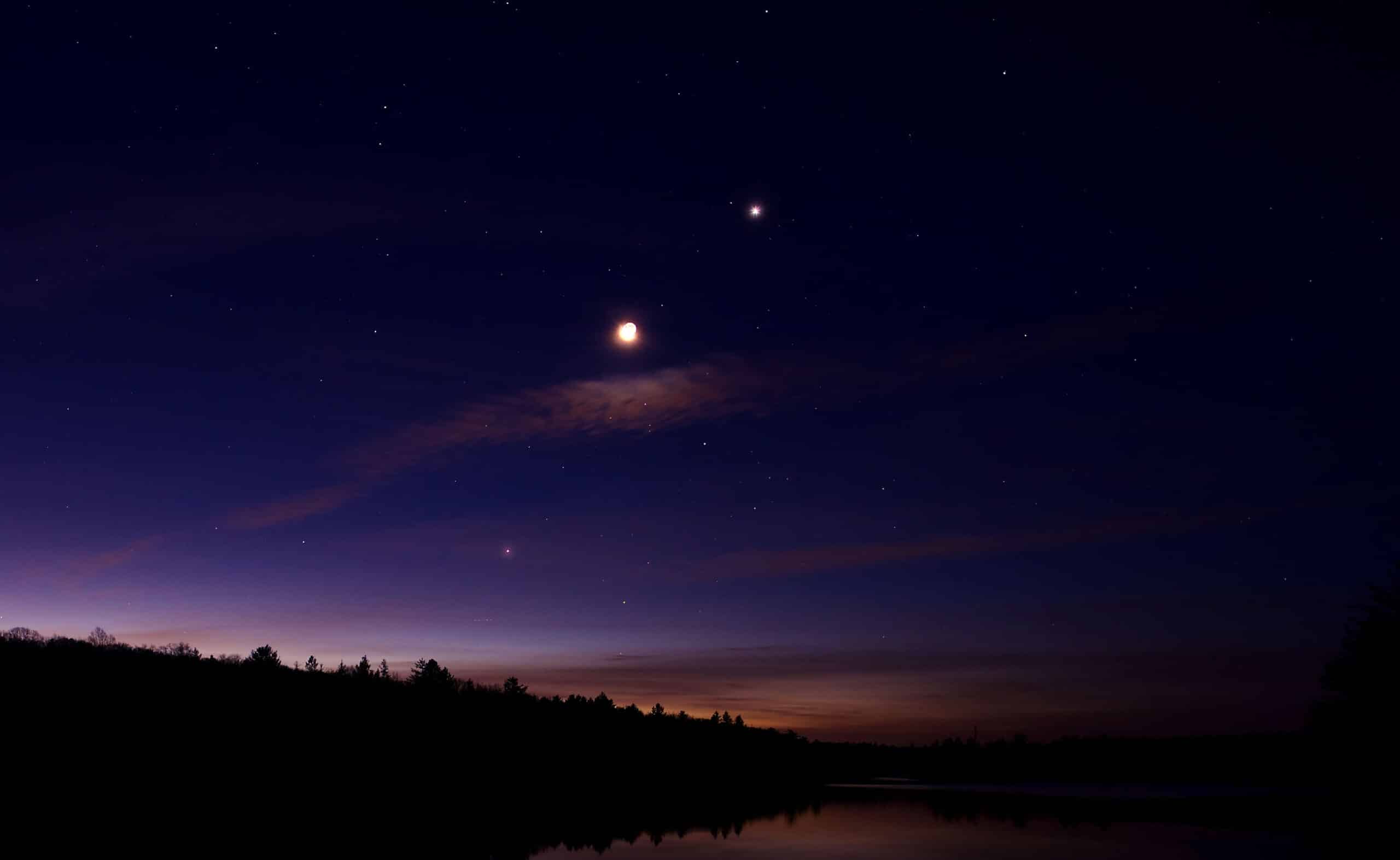If you love stargazing as much as I do, there are going to be plenty of chances to see some beautiful planets this month. While there won’t be a major spectacle or anything of that sort, there will be some amazing natural patterns going on that are truly worth checking out.
Perhaps the best thing in the sky this month is Venus and Jupiter’s dance across the sky. “Anyone who was out looking for the past few weeks will probably notice there have been two bright objects low in the West after sunset, and they’ve gradually switched places,” says Lara Eakins, Public Outreach Program Coordinator at the University of Texas Department of Astronomy.
Over the past few weeks, Jupiter has been higher in the sky, while Venus danced a little lower. However, the two have now swapped places. Soon, the moon will pass the planets by. “On the evening of Wednesday, March 22, shortly after sunset, you might be able to catch a very thin crescent moon just above Jupiter.”
Then, after the moon is gone, Jupiter will also leave the night sky but will remain visible in the early morning times.
“What Jupiter is going to do in the next week or two, it’s going to go behind the sun from the earth’s point of view. So we won’t be able to see it in our skies at all, because it’d be too close to the sun. But then, gradually, you’ll start to see it emerge in the morning skies,” Eakins said.
Additionally, Mars will be observable in the night sky as well. According to Eakins, Mars and Betelgeuse and Aldebaran will form a triangle in the night sky directly overhead. For reference, Betelgeuse can be found if you look near Orion.
“The other one is the star Aldebaran, which is in the constellation Taurus. And it’s part of a V shape of stars.” And if you are looking for Mars, simply look for the most vibrant shade of red among the planetary bodies above.

